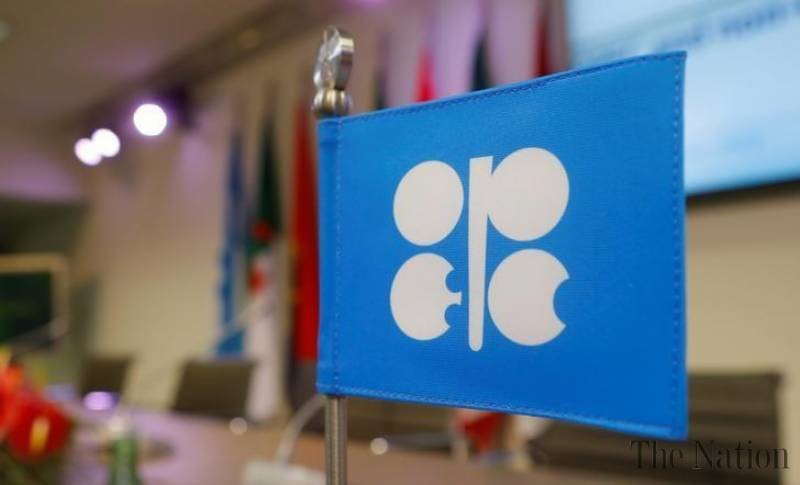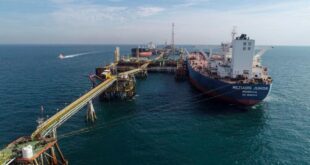Iran’s crude oil and condensate exports rose three percent month-on-month in January as it continued to regain market share. widening its appeal among refiners around the globe in the process.
Total estimated export volume on Aframaxes. Suezmaxes and VLCCs from Iranian ports in January climbed to 2.162 mbd from 2.102 mbd in December. data from cFlow. S&.P Global Platts trade flow software. showed.
Iran was the only Middle Eastern producer to see exports rise in January. as others. like Iraq. Kuwait. Saudi Arabia. and the UAE. saw a fall in loadings. in line with agreed OPEC-led output cuts by crude producers. Unlike its peers under the landmark OPEC-led agreement. Iran has wiggle room to boost production to 3.8 mbd.
Iranian crude is similar in quality to barrels from other OPEC countries in its region. meaning this is an ideal time for it to broaden its customer base. sources said.
Output in January rose to 3.72 mbd — up 30.000 bpd from December — a monthly survey of OPEC output by Platts found. meaning Iran seems intent on reclaiming ground lost under years of sanctions that crippled its oil sector.
One of the main reasons for the rise in output has been a gradual increase in production from the South Azadegan field. in the strategic West Karun region. according to sources and Oil Ministry officials.
In recent months. Iran has signed a number of upstream development deals as part of its plans to boost oil and gas exports to pre-sanctions level of four mbd.
**Asia crude exports to rise
Exports to Asia accounted for 61 percent — or 1.323 mbd — of outflows. marking an increase of almost 200.000 bpd from December. India emerged as the largest buyer of Iranian crude. with exports in January totaling 571.387 bpd. more than double the 281.065 bpd in December.
Rising demand for Iranian crude from India bodes well for Iran. as the South Asian country is one of the main drivers of oil demand growth this year. The bulk of these exports traveled to Essar Oil’s 400.000 bpd Vadinar refinery on the west coast of India — the second-largest privately held refinery in India. after Reliance Industries’ Jamnagar plant.
Essar Oil is one of the biggest buyers of Iranian crude and its purchases have increased significantly post-sanctions. boosted by the ease of using of shipping insurance. as its refinery relies heavily on sour crudes from the Persian Gulf and Latin America.
The rest of the loadings to India went to the country’s newest refinery at Paradip operated by IOC along with refineries in Chennai and New Mangalore.
Exports to China in January fell to 369.484 bpd from 413.710 bpd the previous month. China was the largest buyer of Iranian crude in 2016. averaging more than 600.000 bpd. according to estimates by Platts.
China’s interest in crude priced off Dated Brent. like grades from the North Sea and West Africa. has increased as the OPEC-led cuts have decreased exports from countries like Iraq. Kuwait. Saudi Arabia and the UAE. narrowing the spread between the Platts Dated Brent and Platts Dubai benchmarks.
Japan. a major buyer of Iranian condensate. saw its interest fall month on month to 212.161 bpd in January. down 35.678 bpd. But flows to South Korea rose to 170.839 bpd from 119.774 bpd in December. South Korean imports of Iranian oil jumped sharply last year. up 164 percent to 112 million barrels. according to Korea National Oil Corp. data.
This rise is attributable to more condensate imports. as oil refiner Hyundai Oilbank started commercial operations at its 130.000 bpd condensate splitter in November. The splitter is running mainly on South Pars condensate as a feedstock. traders said. along with some Qatari condensates.
Trading sources also said South Korean refiners found Iranian oil more price-competitive than other oil suppliers in the Middle East. In Europe. Turkey and France were the major destinations. with 209.774 bpd and 170.419 bpd. respectively. exported from Iran in January.
Demand from Greece. Italy and Spain fell month on month but traders have said European refiners remained interested in Iranian crude due to its competitive pricing. The cracking margins in Europe for Iran Heavy compared with Saudi Arabia’s Arab Medium are also providing better yields. sources said.
**Old buyers return
Last month. the International Group of P&.I Clubs said it will soon provide nearly full coverage of reinsurance of around $7.8 billion per tanker for shipping Iranian oil. in addition to resuming reinsurance coverage for the National Iranian Tanker Co.’s oil tankers. That can boost Iran’s already increasing oil exports as ongoing US sanctions had created hurdles on the availability of ships to carry Iranian barrels. sources said.
With it now easier for a wider pool of charterers and shipowners to transport and trade Iranian oil. the past month saw some old buyers returning. In the next few days. two Iranian VLCCs — the Huge and the Snow — will discharge a mix of Iranian heavy and light crude grades in the Rotterdam refining hub for the first time in five years. National Iranian Oil Company sold a cargo of Iranian Light crude to Indonesia’s state-owned Pertamina for February loading as a test sale. the first direct crude sale between NIOC and Pertamina for around 15 years. according to sources close to the matter.
The Philippines’ PNOC has also recently signaled it was seeking to resume crude oil imports from Iran. PNOC president and CEO Pedro Aquino said recently his company and NIOC were in negotiations for the long-term sale of four million barrels of Iranian crude oil per month to the Philippines.

 Iran Energy News Oil, Gas, Petrochemical and Energy Field Specialized Channel
Iran Energy News Oil, Gas, Petrochemical and Energy Field Specialized Channel


